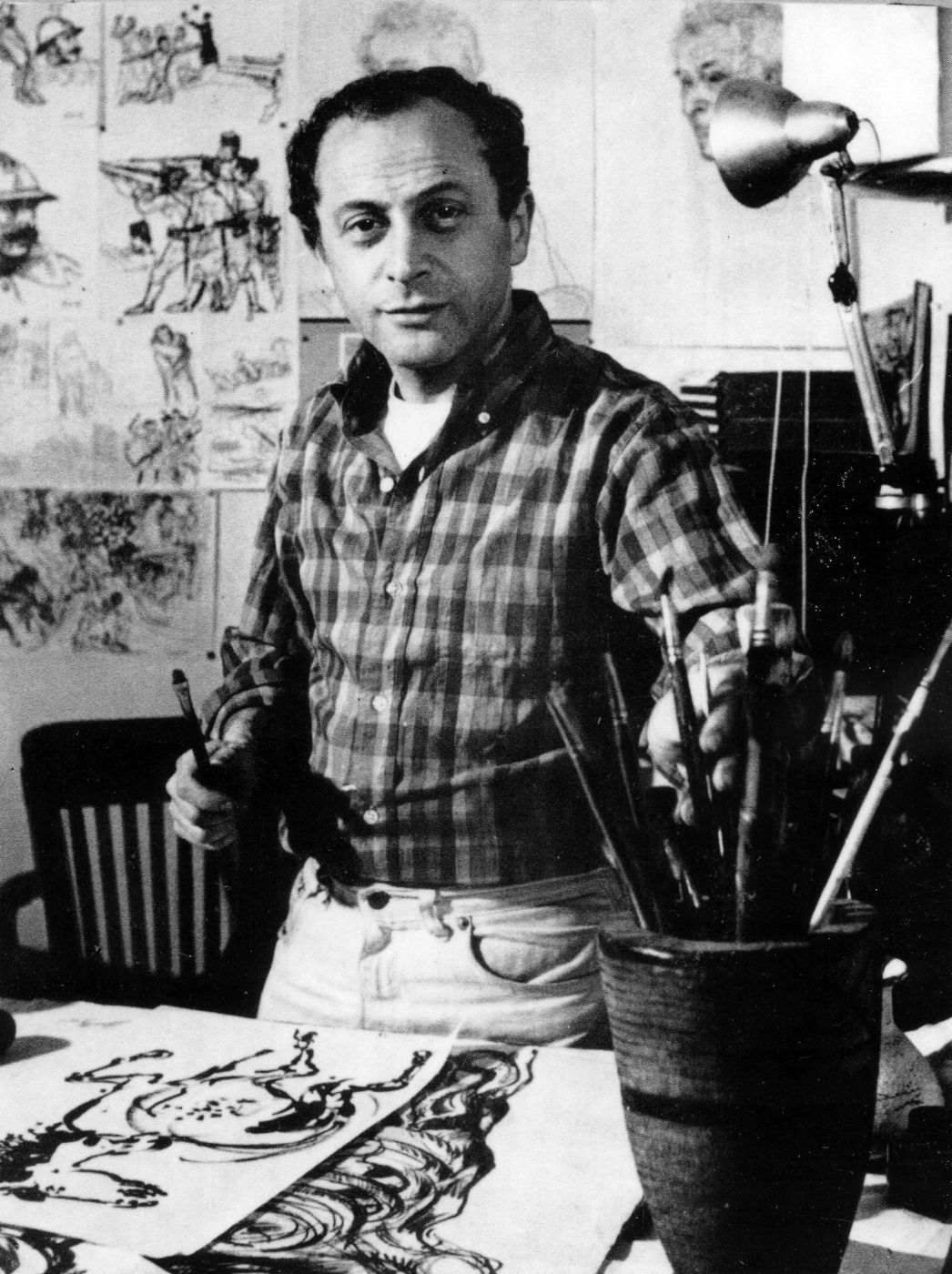
Walter Spitzer was born in Cieszyn, Poland on 14 June 1927, the son of a Jewish liqueur producer, and attended the German school there. He began to draw and paint at an early age.
In 1939 the Spitzer family was forcibly removed by the Germans to the town of Strzemieszyce, which was turned into a ghetto in 1942. When the ghetto was liquidated in June 1943 Spitzer’s mother was shot, and the sixteen-year-old Walter was deported to Blechhammer, a subcamp of Auschwitz. There he painted portraits of Wehrmacht soldiers and fellow inmates in exchange for food. He was one of the few to survive the evacuation march from Auschwitz to Buchenwald, where to begin with, in late February 1945, he was held in the
Spitzer served as an interpreter with an American army unit, and at the same time executed numerous drawings depicting the world of the camps. In June 1945 the Americans took him to Paris, where – following the advice of his father, who had died in 1940 – he began to study art at the École des Beaux-Arts the following year. After completing his training as an artist he produced paintings expressing a critical view of the society of his day. In 1955, in commemoration of the camps and the death marches, he executed a cycle of nine etchings in an edition of thirty, which he gave to various museums in Israel and in France. In the 1960s he established himself as an illustrator of exclusive editions of works by such authors as André Malraux, Jean-Paul Sartre, Joseph Kessel and Nikos Kasantzakis. The Six-Day War prompted him to begin painting subjects from Jewish and Biblical history; in 1993 he made the sculpture Muselmann for a Jewish memorial at the Buchenwald Memorial. His memorial to the deportation of the French Jews in Paris was inaugurated by President François Mitterrand in 1994.
Walter Spitzer died in Paris on 13 April 2021.


